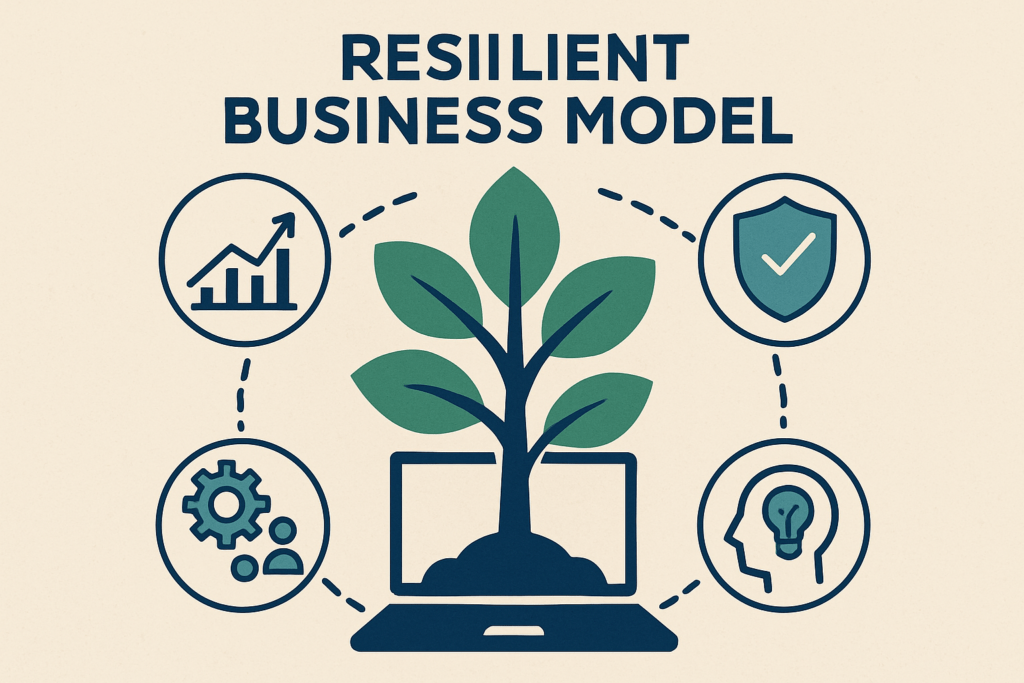Introduction: The Mindset Behind Great Entrepreneurship Strategies
- Quick welcome for new and aspiring founders.
- Define what makes a solid entrepreneurship strategy—not just big ideas, but daily grit and smart moves.
Introduction: The Mindset Behind Great Entrepreneurship Strategies
Welcome, whether you’re a wide-eyed newcomer or a scrappy founder deep in the trenches. Let’s be blunt: entrepreneurship isn’t just about having a killer idea or a slick pitch deck. It’s about the grind—the day-in, day-out decisions that build momentum (or stall you out).
A solid entrepreneurship strategy means more than dreaming big. It’s about executing with discipline. Get comfortable making tough choices, learning fast, and keeping your ego in check. The real winners? They don’t just have vision. They put in the work, adapt quickly, and don’t confuse action with progress. If you’re ready to embrace discomfort and play the long game, you’re already halfway there.
Nailing the Basics: Know Your Why and Your Market
Forget the hype—great entrepreneurship starts with brutal honesty. Why does your idea deserve to exist? If you can’t explain, in plain language, who needs your product and why, stop right there. This is more than just passion; it’s ruthless customer focus. The best founders obsess over their users’ real problems and daily frustrations. So get out there: talk to customers, stalk Reddit threads, lurk in competitor reviews. Your job is to listen, not to pitch.
Next, survey the battlefield. Competitors aren’t just obstacles; they’re free market research. What do they do well? Where do they choke? Use their wins (and especially their mistakes) to shape smarter moves. Don’t waste energy reinventing the wheel—just spin it better, faster, and more efficiently.
This phase isn’t glamorous. It’s not about clever slogans or epic funding rounds. But the harsh truth? Solid entrepreneurship guidance always starts here: nailing your “why,” knowing your market inside and out, and building from real, validated need. Get this wrong, and nothing else matters. Get it right, and you’re already ahead of most.
Crafting Your Startup Blueprint: Clarity Over Chaos
Let’s cut to it: every founder thinks their idea is the next big thing. But without a clear startup blueprint, you’re just guessing in the dark. Smart founders put pen to paper—what problem do you solve? Who do you solve it for? Don’t just scribble bullet points; detail your core offering, ironclad value proposition, and laser-focused target audience.
Your blueprint is your startup’s backbone, not a dusty PowerPoint you pitch once and forget. Set milestones that are real, not wishful thinking—revenue targets, prototype launch dates, user benchmarks. Skip the fuzzy “grow by a lot this year.” Instead, try “land our first 50 paid users by Q2.” That level of clarity makes the chaos manageable. Your startup blueprint isn’t about creating more paperwork. It’s a living document that keeps you—and your team—aligned and disciplined when the day-to-day noise hits.
Building a Resilient Business Model
Resilience isn’t just a buzzword—it’s the difference between making it and folding when market conditions get rough. A strong, resilient business model is your shock absorber for unexpected hits, whether that’s a cashflow crunch, a surprise competitor, or your best employee jumping ship.
Let’s keep it spartan: first, strip your operations to what actually makes money or adds value. Lean operations mean you move faster and bleed less when things get rocky. Don’t buy, hire, or build until there’s a clear need.
Next up: cashflow. Manage it like a hawk. Survival depends less on profit and more on money being there when you need it. Track every inflow and outflow. Set aside reserves, no matter how tough. Don’t wait until you’re in a squeeze—anticipate and plan.
And finally, pivoting isn’t a failure. Staying married to the same plan, even when it’s not working, is. Watch the numbers, watch the trends, be willing to switch gears fast. Some of the best founders are just really quick learners who can steer away from disaster before it hits.
For more hands-on ways to toughen up your business model, check out how to build a resilient business model. The reality? It’s not about being invincible. It’s about bouncing back—every single time.
Practical Startup Strategy Tips for Everyday Progress
Let’s cut to the chase—dreams are good, but execution wins the race. Here’s an arsenal of no-nonsense startup strategy tips to help move the needle, day in and day out:
- Push MVPs Out the Door Early
Don’t spend months polishing something nobody wants. Build a Minimum Viable Product—just enough to see if anyone bites. Ship, learn, tweak, repeat. - Relentlessly Hunt for Feedback
Get your product in users’ hands and listen hard. Ignore ego, zero in on what clicks (and what crashes). Real feedback from customers, mentors, and even that brutally honest friend is what sharpens your edge. - Iterate Like It’s Your Job—Because It Is
Treat every version like a stepping stone, not a legacy. Test, learn, improve. Fast cycles beat long plans. - Network Like You Mean It
You’re not an island. Make friends—online, at meetups, wherever. The right connection or bit of advice often changes the whole game. - Find a Mentor
Someone who’s walked this road can spot potholes before you fall in. Ask questions, listen more than you talk, and actually apply the lessons. - Never Stop Leveling Up
Tech moves fast. Markets shift. Carve out time every week to read, watch talks, and absorb new playbooks. The best founders are lifelong learners.
There’s no glamour in daily grind, but these startup strategy tips make sure your grind gets results. Small wins stack up—they’re how scrappy startups become legends.
Avoiding Common Pitfalls: Lessons From the Trenches
Let’s get real: every founder stumbles—sometimes spectacularly. The difference between a rookie mistake and a fatal one? Whether you stubbornly dig in your heels, or pause and recalibrate. Early on, it’s easy to fall in love with your original idea, ignoring warning signs from the market or customer feedback. Don’t. Attachments to failing concepts drain precious time and money—pivot sooner rather than later.
Another classic misstep: trying to go it alone. Isolation kills perspective. Surround yourself with people who challenge your assumptions, not just those who cheer you on. Listen to hard truths, and adjust. Forgetting to track metrics, neglecting cash flow, or overcomplicating your product are also frequent misfires. Simplicity and humility go a long way.
Bottom line: Accept you’ll mess up—just don’t make the same mistake twice. Stay open, stay flexible, and treat each setback as an upgrade, not a dead end.
External Resource: Where to Go For More Guidance
You don’t have to navigate the startup wilds solo. When the basics aren’t enough and you crave examples from the real trenches—not theory—tap into expert-curated resources. A solid place to start is Forbes’ entrepreneurship strategies. It offers the kind of entrepreneurship guidance that cuts through hype: recent case studies, practical advice from founders, and trend breakdowns. Bookmark it, pull a few ideas, and keep looping back as your business grows. The journey’s yours, but smart founders borrow maps.
Conclusion: Start Smart, Stay Adaptable
At the end of the day, it’s not about dazzling tech or airtight business plans—it’s about building your startup on a solid foundation, then rolling with the punches. Real entrepreneurship strategies aren’t something you set and forget. They’re about staying sharp, adapting fast, and stacking small wins every day.
Progress will always trump perfection. Commit to learning, iterate with intent, and don’t let bumps in the road throw you off your game. With a clear foundation and a flexible mindset, you’re already ahead of the pack—so keep moving forward, one decision at a time.



